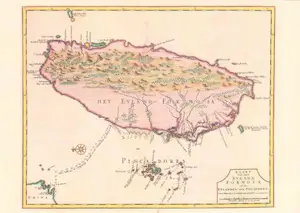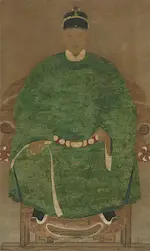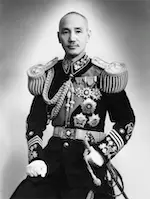A History of Taiwan
People have been living on Taiwan for a very long time. A number of indigenous people, most famously the Dapenkeng, flourished and waned before the arrival of people from China, perhaps as early as the Three Kingdoms period. Contact between Mainland Chinese and Taiwan continued intermittently for centuries, erupting in small-scale conflict during the Yuan Dynasty, in the late 13th Century. In one of history's accidents, a delegation from the emperor Kublai Khan ended up in Taiwan instead of their intended destination of Ryukyu, a kingdom that flourished during the Middle Ages in the islands of the same name; after a brief skirmish, which resulted in deaths, the Yuan troops left Taiwan. The first known written account of Taiwan in Chinese records came in 1349, from the hand of Wang Dayuan, a trader who traveled extensively throughout Asian lands and documented his travels and observations. He referred to Taiwan as Liuqiu and Pisheye and noted the presence of pottery from mainland China. Travels between the mainland and the island accelerated as time went by, and trade flourished, albeit in a small scale. Another well-known Chinese traveler, Chen Di, visited Taiwan in 1603, on behalf of China's ruling Ming Dynasty. Chen Di's account contained a more extensive description of Taiwan's peoples and customs than that of Wang Dayuan two centuries earlier. By the time of Chen Di, the island had come to be known as Taiwan, after the name of the tribe Tayouan. 
Echoing efforts throughout the Pacific, traders from European countries arrived on Taiwan during the Age of Exploration. Dutch sailors arrived in 1623, having defeated the rival Portuguese a year earlier at the Battle of Macau. The Dutch East India Company built a fort on a island off the southwest coast of Taiwan and worked to expand its operations on the larger island. In the north were Spanish possessions. By this time, Europeans were referring to Taiwan as Formosa, a name dating to 1542 on Portuguese maps. Beating the Europeans to the punch were Japanese traders, first and foremost in the form of an expedition from the Tokugawa shogunate in 1609. However, Japanese possessions in Taiwan were few and far between. In the end, it was the Dutch who were the most successful at establishing a colonial presence in Taiwan. Even they, though, had possession of such lands for a limited time, as they became involved in internecine struggles in China and ended up surrendering the last of their lands in 1668. 
The head of the Chinese force that ended Dutch authority on Taiwan was Zheng Chenggong (right), referred to in Dutch sources as Koxinga. He established the Kingdom of Tungning in Taiwan and then passed it on to his son, Zheng Jing. Zheng Chenggong died in 1662, and Zheng Jing survived an uprising led by his own brother. By this time, the Qing were ruling China, and they found an ally in the Dutch, who joined in a pair of invasions in the 1660s that were both foiled by bad weather. Zheng Jing ruled on, turning back smaller invasion attempts. His death in 1681 precipitated a succession crisis, and Qing forces from the mainland, led by Shi Lang, were finally successful at taking over the island, in 1683. The Qing set up military bases on the island and created Taiwan Prefecture, which was divided into three counties. Japanese forces were back nearly a century later, invading the southern part of Taiwan in 1874. A war between China and France began in 1883, and French forces occupied northern parts of Taiwan the following year. The French left two years later, and the Japanese succeeded in occupying the entire island as the result of their victory in the First Sino-Japanese War. By that time, Taipei had become Taiwan's capital. Japan ruled Taiwan until the end of World War II, paying special attention to the island beginning in the 1930s when war with China began anew. The Japanese defeat in World War II left Taiwan free to set its own course. 
The victorious Chinese leader was Chiang Kai-shek (left), leader of the Kuomintang (KMT) government. At the same time that he was battling Japanese forces, he was struggling against revolutionary forces led by Mao Zedong. The latter was victorious in 1949, forcing the former into exile, on Taiwan. An estimated 2 million people fled with him. Taiwan became the Republic of China, and the mainland became the People's Republic of China. Mainland Chinese forces continued to focus on Taiwan, and armed struggle was the norm for a few years. Conflict turned to the political realm, where it has remained. Taiwan, which had entered the United Nations in 1949, left in 1971, just as China was admitted. Validating that shift in international focus was the change in official recognition by the United States, from Taiwan to China, in 1979. China continued to assert that Taiwan be rejoined with the mainland government, by peaceful means if possible. The Chinese government in 2005 passed the Anti-Secession Law, which stated that using military force to facilitate a reunion was not out of the question. Meanwhile, Taiwan has had a succession of leaders and has transitioned from a military dictatorship to a representative government. |
|
Social Studies for Kids
copyright 2002–2024
David White




